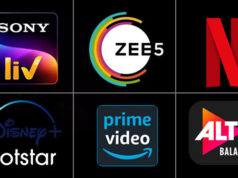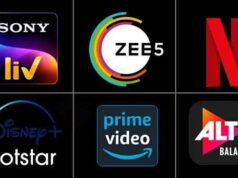According to new research from the American consulting company Bain & Company, long-form video (LFV) in India is expected to reach 650 million consumers by 2025. A continuous increase in internet users, access to cheaper, faster bandwidth, the launch of more inexpensive plans, including the introduction of freemium models, and a profusion of content, according to the research, will fuel this development. According to the study, “a significant focus on regional and vernacular content would accelerate this even further—85 percent of material seen is non-English, and 30% is in languages other than English or Hindi.”
Another factor fueling the growth of LFVs is the Covid-19 epidemic, which has been aided by lengthy lockdowns and the new normal of working from home.
India’s online video user base has grown to more than 350 million individuals, with an annual growth rate of 24% from 2018 to 2020. Over this time, the amount of time spent watching internet videos per daily active user has grown by 60% to 70%. “Despite this quick increase, there is much opportunity for expansion—online video user penetration in India is roughly 60% of internet users, compared to more than 90% in China,” the report stated.
In the LFV sector, YouTube has traditionally been the behemoth, but other companies are rapidly catching up. Last year, paid subscription-based services such as Netflix, Amazon Prime Video, and Disney+ Hotstar witnessed a significant increase in users, particularly during the first lockout in March to June 2020. According to the study, “sports content has enabled players such as Disney+ Hotstar rapidly expand their user base, with the platform experiencing a 50 percent boost in monthly active users during the Indian Premier League in 2020.”
According to the report, six major trends will shape the OTT space in India in the coming years: an out-and-out explosion of content, including original, regional, and niche material; value chain integration, with OTT players foraying into content production; tech-enabled personalisation and recommendation algorithm sophistication; a push for monetisation; user engagement via social features; and a push for monetisation.










